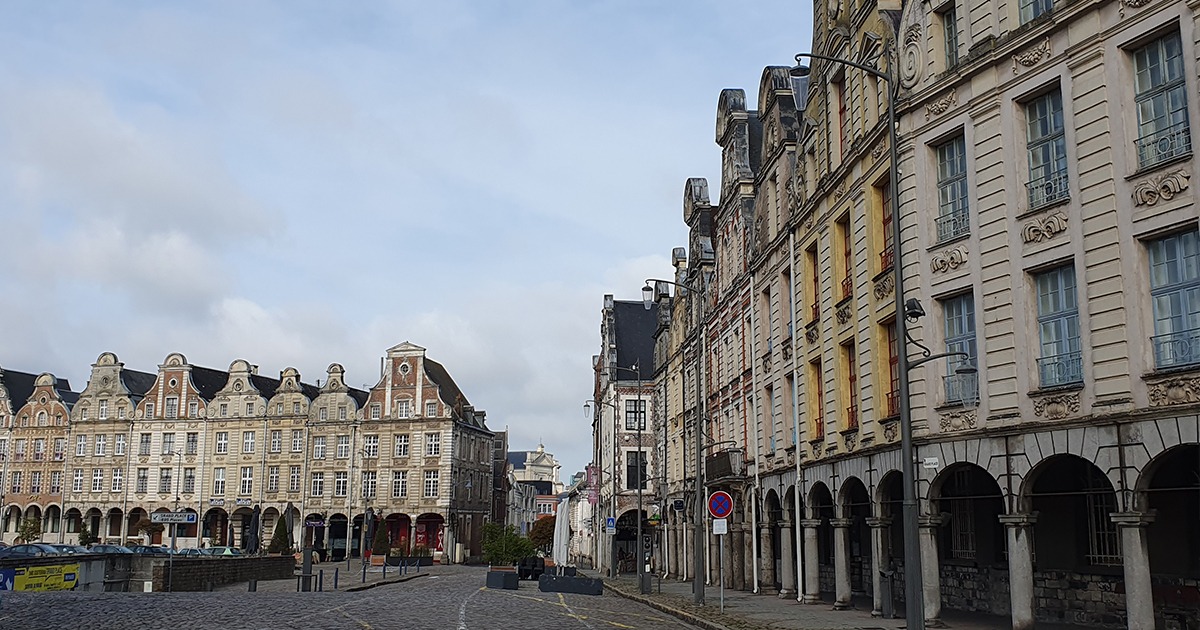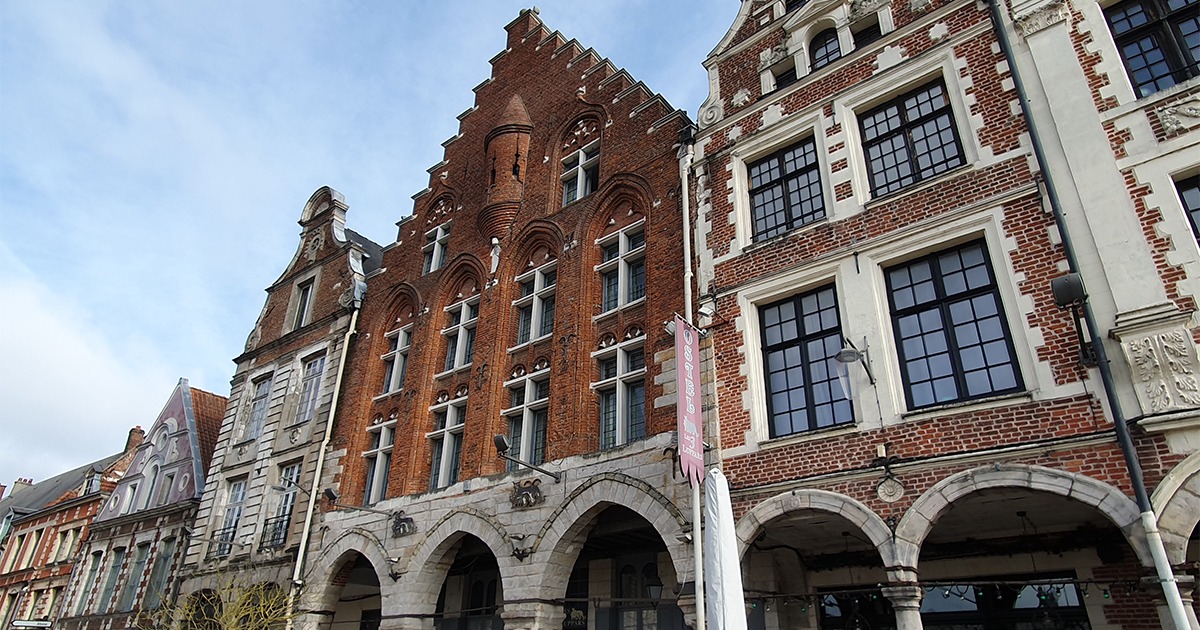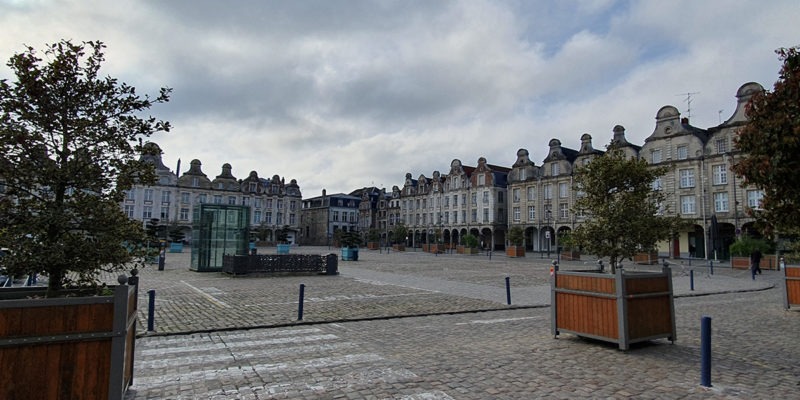The Grand’Place d’Arras, located in the Pas-de-Calais department of France, is a veritable architectural treasure trove worth the detour, with its Baroque-style houses, listed as historic monuments, attracting thousands of visitors every year from all over the world to admire their unique charm. In this article, we invite you to discover the rich heritage of this exceptional square and enjoy an unforgettable experience.
A little history: Arras’ Grand’Place and its origins
The origin of Arras’ Grand-Place, located in the heart of the city, remains a subject of debate among historians.
Some maintain that it was built on the former orchard of Saint-Vaast, while others believe it dates back to the origins of the town itself. Another theory is that the Grand-Place was laid out during the reign of Charles V. The history of the Grand-Place goes back to the year 1004, when it is said to have been the birthplace of Baldwin V of Flanders in a tent erected for the occasion. To mark the occasion, festivities were organized and a column of monolithic stone, bearing a bust of a woman called “La Pollène”, was erected on the site of the tent. By 1090, the square had already become the town’s first urban core and economic center. The Grand-Place probably dates from the 11th century. As early as the 12th century, the square served as a meeting place for equestrian jousts and tournaments during the period of the Dukes of Burgundy. The first stone house, at number 48, was built in the 12th century and inhabited by Dodon de la Lance, a high-ranking member of the oldest known aldermanic community. In 1266, Audefroi Louchard founded a hospice at number 56. On February 8, 1478, near the Porte Saint-Michel, Louis XI had a fortress built to ensure the loyalty of the inhabitants of Arras. The statue of Pollène was removed in 1791. During their imperial tour of northern France, Napoleon III and Eugénie de Montijo crossed the Grand-Place, where a huge pyramid of grain sacks stood, a symbol of the square’s importance as a grain market in France in the 18th century. On this occasion, farmers, dressed in their working clothes, sat on the seats of this monument.
During the First World War, the pediments of the Spanish-Flemish mansions were destroyed by German artillery.
However, between 1919 and 1934, the square was admirably restored to its original state by architect Pierre Paquet. In the absence of precise surveys of facades and buildings, he had to rely on old documents and photographs to solve complex problems. The exterior of the buildings was systematically preserved, while the interior was treated with greater freedom. As a result, the Grand-Place d’Arras is a living testimony to the city’s eventful history, having survived the centuries and retained its importance as an economic and cultural center. It is a gathering place for locals and visitors alike, offering a magnificent setting for events and celebrations. Today, the Grand-Place d’Arras is a true architectural gem, with its meticulously restored Hispano-Flemish mansions and the many shops and restaurants that enliven the square.
Every year, the Grand-Place d’Arras hosts a variety of cultural events, including markets (the Christmas market in particular), exhibitions and shows such as the Arras Film Festival. These events help to preserve the historical and cultural heritage of the square, while offering locals and visitors alike the opportunity to come together and celebrate the richness and diversity of the region.

View of the Grand’Place and its Baroque houses with typical columns
Baroque houses: an architectural treasure trove
The houses lining the Grand’Place d’Arras are mostly in the Flemish Baroque style typical of the region.
They reflect an era when art and architecture were closely intertwined. Their richly ornate facades, imposing structures and exuberant decorations bear witness to the grandeur of the era. The Grand’Place is surrounded by 155 distinctive residences, which, as mentioned above, perfectly reflect the Flemish Baroque style and French classical architecture of the 17th century, as in the Place des Héros adjacent to the nearby Belfry, notably through the scrolled gables and arcades in front of the houses. These arcades rest on 345 pillars. The facades of these homes form a harmonious, coherent whole, despite the individuality of each house. This is due to the rigorous alignment of floors and cornices, as well as adherence to a town planning code at the time of construction. Most homes have a first floor and three upper floors, with the second floor generally having higher ceilings than the upper floors, and the third floor being attic space. The most striking building is the Hotel Les Trois Luppars, at no. 49. This building, with the oldest façade and structure on the square, dates back to the 15th century (1467). It features Flemish Gothic brickwork, a stepped gable and large ogival windows.

The red house of the Hotel Les Trois Luppars is located at a corner of the Grand’Place .
The Grand Place d’Arras in art and film
In the arts, the Grand-Place d’Arras has been represented in a variety of works. Numerous painters have been inspired by its beauty and atmosphere, and photographers have immortalized specific moments or events that took place on the square; some of these works can be found at the Museum of fine arts. Images of the Grand-Place d’Arras can also be found on postcards, posters and other visual media, helping to promote tourism and local culture. As far as cinema is concerned, the Grand-Place d’Arras has been used as a backdrop for several films, both French and international. Here are two notable films :
- “L’Aveu“ is a French-Italian film directed by Costa-Gavras, released in 1970. The film is based on Artur London’s book of the same name, which recounts his experiences as a member of the Czechoslovak Communist government and his persecution during the Stalinist purges of the 1950s. The film stars Yves Montand and Simone Signoret, as well as Gabriele Ferzetti and Michel Vitold. The final scene takes place on the Grand’Place in Arras.
- “La Liste de mes envies“ is a French film directed by Didier Le Pêcheur, released in 2014. It is a film adaptation of the eponymous novel written by Grégoire Delacourt, published in 2012. The film stars Mathilde Seigner, Marc Lavoine, Patrick Chesnais and Virginie Hocq, among others.
In addition to these films, the Grand-Place d’Arras has also been used for advertising shoots and TV series.
The beauty and charm of this historic square continue to attract filmmakers and artists, making it an emblematic location in the arts and cinema.
Practical information for visiting the Grand’Place d’Arras
You can get to the Grand’Place d’Arras by public transport (bus, Citadine and train) or by car. Pay parking is available on the square for your convenience, and there’s even an underground parking lot if you can’t find space above. You’ll also find plenty of shops, restaurants and cafés around the Grand’Place to make the most of your stay.
Location :
Located in the historic heart of Arras, Grand’Place is linked to Place des Héros by Rue de la Taillerie, to Avenue Paul Michonneau by Square Léon Jouhaux, and to Place Guy Mollet by Rue Sainte-Crois.
X.D.
